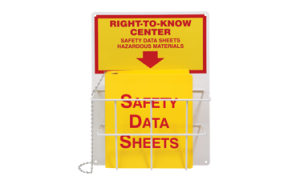 Many computer jobs offer few opportunities for alternate activities or postures, and, thanks to the fluidity of computer keyboards, workers can key faster and for longer uninterrupted stretches than ever before.
Many computer jobs offer few opportunities for alternate activities or postures, and, thanks to the fluidity of computer keyboards, workers can key faster and for longer uninterrupted stretches than ever before.
Posture
Although your own work habits can contribute to back and shoulder pain, using good posture is not a simple matter of finding the “right” position in which to sit. Even “poor” postures (feet up on chair rungs, slumping, twisting your body into odd positions) can prove comfortable if you don’t remain in them for extended periods of time. In fact, shifting about periodically proves useful for many people.
- Ergonomic specialists recommend the following changes to your behavior and work environment to avoid back, neck, and shoulder pain:
- Change your body position periodically throughout the day.
- Use a document stand to reduce the amount of neck twisting or bending forward if typing from a source document.
- Position your keyboard directly in front of you and at approximately elbow height. This should enable you to type with straight wrists. If this is not possible with the keyboard atop the work surface, use an adjustable-height keyboard tray.
- Center your monitor with your keyboard and chair.
- Avoid ear-to-shoulder neck positioning while on the phone. Use a telephone headset that will allow you to work on the computer with good posture while on the phone.
- Rearrange the work area to avoid excess bending, stooping, and reaching.
- Try to relax. Many injuries and painful episodes arise from continuously tensing your neck and shoulder muscles while working.
Seating
A good chair can contribute significantly to reducing the risk of lower back pain or injury. A good ergonomic chair includes all or most of the following characteristics, not just one or two:
- Adjustable lumbar support that maintains the natural “S” curvature of the spine
- Angle between the backrest and seat that allows you to sit without leaning forward uncomfortably
- Adjustable armrests
- Slightly inclined backrest
- Allows for a variety of seated postures
- Seat height adjustability
- Seat pan depth adjustability
- Soft, rounded edges
- Size that fits you
- High backrest or headrest for deeply reclining postures
- Comfortable but slip-resistant fabric
- Casters that are appropriate for the floor surface
If your feet don’t reach the floor, consider using a footrest. In addition, if you have an older chair without lumbar support, try using a small pillow or towel roll to relieve pressure on your lower back.
Also, remember that ergonomic features won’t help you if the chair doesn’t suit your body or sitting habits, so adjustability is important. Be sure to have the adjustable features of your chair explained to you to ensure the best fit.
Repetition
As with musculoskeletal disorders, one of the best ways to avoid back, neck, and shoulder injuries is to minimize sustained exertions. The following tips should help you:
- Alternate tasks. If possible, get up from your workstation periodically to use the phone, make copies, file paperwork, etc.
- Take several rest breaks. For many people, “microbreaks” that allow you to pause frequently are more effective than the traditional 15-minute break every two hours.
- Take short breaks that involve active exercise (walking, stretching); they are often the most effective in relieving stress on the back, neck, and shoulders.
Eyestrain
A frequent physical complaint by people who spend a lot of time in front of a monitor is eyestrain. Specialists in ergonomics have identified several problem areas and possible corrections for eyestrain, including:
Glare
- Move or shield the light source.
- Move the monitor.
- Change the monitor’s angle.
- Apply a good quality glare filter to the monitor.
- When correcting for glare, don’t create other problems. For instance, if you move your monitor, don’t put it in a place that will produce neck strain. The monitor should be directly in front of you.
- When possible, place your monitor at a right angle with the window.
Lighting Levels
- Following the preceding recommendations, adjust your screen position and lighting sources (lamps, etc.) to achieve best results.
- Work with a light screen background (dark type or images on white or pale background)—you will find it is easier on your eyes.
- Rest the muscles of your eyes by focusing on a distant object, away from your monitor, occasionally.
- When using a laptop, look into the distance more frequently. A laptop monitor will probably not have the best placement, since it is attached to the keyboard.
- If you are using a laptop at your primary workstation, a docking station with an external keyboard and mouse should be used. An external monitor, or display, should also be considered.
Readability of Screen and Document
- Place monitors directly in front of you and documents to the immediate right or left, at the same distance.
- Upgrade or replace monitors with poor resolution or flicker.
- Adjust your monitor’s font size or (if appropropriate).
- If you wear glasses, consider getting full-frame reading glasses prescribed for the working distance of your monitor (typically, 15 to 30 inches/ 38 to 76 cm). These will allow you to place the monitor correctly and see well without stressing your posture.
- Place the monitor so that the top of the screen is at your line of sight. If you wear bifocals the top of the screen should be slightly below your line of sight.
- Don’t skip visits to the eye doctor. Eyestrain could indicate a problem with your vision beyond the use of a computer monitor.
via An Ergonomics Approach to Avoiding Office Workplace Injuries and Illnesses.
 Families need to be aware of the dangers related to homes and recreation and take the proper safety precautions to prevent unintentional injuries and deaths. The following are the top causes:
Families need to be aware of the dangers related to homes and recreation and take the proper safety precautions to prevent unintentional injuries and deaths. The following are the top causes:








